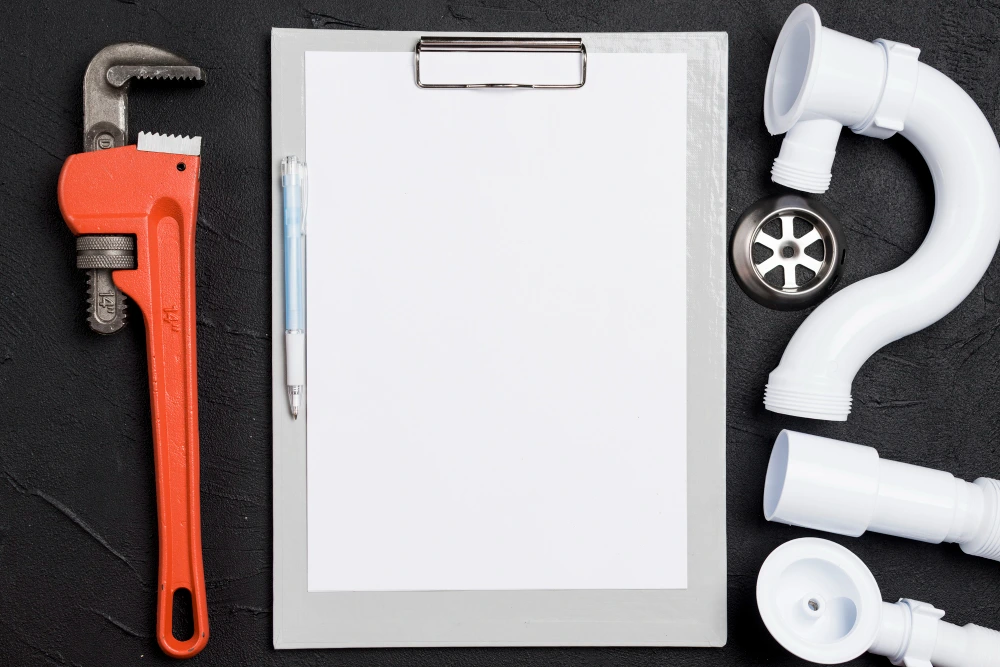Costly Plumbing Estimation Mistakes
Plumbing might look like just pipes and fittings on a blueprint, but in commercial construction, it’s the lifeline of the entire building. Get it right, and everything flows smoothly. Get it wrong, and the whole project can grind to a halt. The truth is, poor plumbing estimation is one of the biggest budget-busters in construction. Miss a riser here, underestimate labor there, or forget a single fixture—and suddenly you’re staring at delays and thousands in surprise costs.
Utopian Takeoffs Plumbing Estimation
At Utopian Takeoffs, we’ve seen firsthand how the right plumbing estimate can make or break a project. Take the Babcock Ranch Retail Core in Punta Gorda, FL—a massive development where precise estimating kept everything on track and avoided costly surprises. From experiences like this and countless other real-world projects, we’ve uncovered the most common mistakes contractors make—and, more importantly, how you can avoid them before they drain your budget.
Table of Contents
Why Accurate Plumbing Estimation Matters More Than Ever
In commercial construction estimation, the margin for error is razor-thin. A budget overrun of just 5–10% can be the difference between a profitable project and a financial headache. Plumbing is one of the trickiest areas to estimate—every layer matters: water, gas, sewer, grease waste, and ventilation. Each must not only fit together seamlessly but also comply with building codes and coordinate with other trades like HVAC and electrical estimation.
That’s why accurate estimating goes far beyond crunching numbers:
- It protects your profit margins by stopping rework and delays before they happen.
- It builds investor confidence with transparent, reliable cost planning.
- It reduces compliance risks, especially around ADA requirements and state plumbing codes.
- It future-proofs your project, making tenant changes smoother and cheaper down the line.
In Babcock Ranch Retail case, this approach paid off—every pipe, valve, and interceptor was mapped in advance, giving the client not just numbers but peace of mind, clarity, and control.
Skipping a Detailed Material Takeoff
Think you can ballpark your material needs? That’s where many contractors go wrong. Relying on rough guesses instead of a full material takeoff (MTO) is one of the fastest ways to blow a budget. Miss just a few valves, fittings, or tenant-ready caps, and suddenly your numbers are off by thousands.
👉 In the Babcock Ranch project every foot of copper, steel, and PVC pipe was tracked down to the inch. We even planned for future tenant stubs and grease systems, saving massive retrofit costs later.
How to avoid it
Treat your MTO like a roadmap. Count everything—from ADA fixtures and thermostatic valves to roof penetrations. The best estimators don’t guess; they dissect every line of the drawings to uncover the real cost story.

Underestimating Labor Costs
Plumbing labor isn’t a flat-rate game—it changes dramatically depending on the task. Running pipes across a ground floor is one thing, but installing risers hundreds of feet in the air? That’s a whole new challenge. Yet many contractors still assume productivity will stay the same, and that’s exactly how budgets spiral out of control.
👉 Strict code inspections and constant coordination with other trades can easily eat up extra labor hours. At Babcock Ranch, we avoided this pitfall by breaking labor into distinct categories—copper, steel, and PVC systems—while assigning specialized crews for ADA fixtures and grease interceptors.
How to avoid it
Always break labor down into clear categories—pipe installs, fixture installs, welding, and general labor. Don’t forget to factor in elevated work, inspections, and trade overlaps. It’s the difference between a guess and an accurate, real-world estimate.
Ignoring Vertical Work Complexity
Think plumbing a high-rise is the same as a single-story build? Think again. Multi-level projects come with sneaky expenses—like scaffolding, lift rentals, tight shafts, and endless inspections—that can quietly eat into your budget. Skip these details, and you’re in for unpleasant surprises when costs skyrocket mid-project.
How to stay ahead
Plan smarter. Adjust labor rates and schedules for vertical work. Factor in scaffolding, slower progress, and the time it takes for inspectors to greenlight each floor. The higher you go, the more precise your planning needs to be.
Overlooking Code & Compliance Requirements
Most people see plumbing codes as just red tape. I see them as landmines waiting to blow up a budget. ADA restrooms, grease interceptors, vent-through-roof penetrations—these aren’t optional extras, they’re non-negotiable requirements. Miss one detail, and you’re staring at failed inspections, costly rework, and weeks of delays.
👉 At Babcock Ranch, we factored every ADA fixture, roof hydrant, and grease line into the estimate upfront—zero compliance surprises, zero wasted dollars.
How to stay safe
Stay sharp on state plumbing codes. Always include specialty fixtures, added inspections, and compliance timelines in your estimate. Trust me—cutting corners here doesn’t save money, it buries it.
Forgetting to Plan for Future-Proofing
I’ve seen it too many times: buildings designed only for “today’s” tenants, with zero thought for tomorrow’s. No capped stubs. No extra risers. No grease lines for future food tenants. And when a new lease comes in? Suddenly you’re tearing into finished walls, ripping up floors, and writing checks you didn’t plan for.
👉 Smart estimating means planning tenant flexibility from the start. Adding future-ready provisions during the initial build costs a fraction of what retrofits will drain later.
Failing to Coordinate with Other Trades
Plumbing doesn’t exist in isolation—it has to align perfectly with HVAC ducts, electrical conduits, and structural elements. Poor coordination leads to rework, delays, and even redesigns mid-project.
👉 Our Babcock Ranch team worked hand-in-hand with HVAC and electrical estimators to ensure risers, vents, and gas lines never clashed with ducts or conduits. That collaboration prevented costly rework.
How to avoid it
Encourage early collaboration between trades during the design and estimating phase. Use 3D models or BIM tools when possible to visualize and avoid conflicts.
Skipping Contingency Allowances
If there’s one truth about plumbing, it’s this: the unexpected always shows up. Copper prices spike. Weather slows your crew. Inspectors ask for rework. And yet, I still see budgets with zero contingency built in—a gamble that almost always backfires.
👉 As an estimator, I never deliver numbers without a 5–7% buffer. Call it insurance, not padding. At Babcock Ranch, that foresight kept us steady through market swings and inspection curveballs—no budget blowouts, no panic.
Final Takeaway–Costly Plumbing Estimation Mistakes
I’ve seen it too many times—skip a material takeoff, overlook compliance costs, or guess at labor, and suddenly that “profitable” plumbing job is bleeding cash. Every small oversight snowballs into delays, overruns, and frustrated clients.
That’s why I treat estimating like mission control: precise numbers, risk buffers, and smart planning. At Babcock Ranch Retail Core, we mapped every line—water, gas, sewer, and grease waste. The result? The client didn’t just get an estimate; they got a clear, confidence-building roadmap to success.

